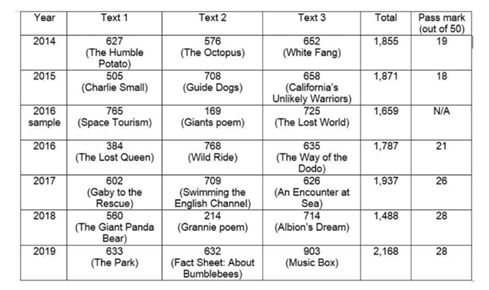5 Ways To Help Children To Access The KS2 Reading SATs
- Aidan Severs

- Jan 5, 2024
- 3 min read
Updated: Mar 25

Not many year 6 teachers want to spend months going through past papers, and indeed, many past papers now don't match the rigour and complexity of the more recent tests.
There's also a growing (and welcome) trend of moving away from reading lessons being death by comprehension questions which require a written answer and are organised by the SATs reading domains.
But, it's never a bad idea to help children to feel like the tests are familiar, and there are some things about the tests that could benefit from a little practice. You can help them to become more familiar with:
text complexity
timing and pacing
presentation
question type
reading outside of interest
Let's dive in...
Familiarity with text complexity

Some of these texts are hard! And even if you can't pre-teach every difficult bit of vocabulary (which you could only do if you had the gift of foresight) you can introduce children to the idea that these texts are not always just a walk in the park.
The tests I've created are matched to the complexity of more recent SATs papers and can be introduced one text at a time, in order of complexity. You can read more about how I made them here: https://www.aidansevers.com/post/getting-ready-for-the-ks2-reading-test
You can download booklet 1 which contains 8 questions and mark schemes for 8 individual texts here: https://www.aidansevers.com/product-page/booklet-1-year-6-sats-prep-reading-comprehension-questions-mark-scheme
Familiarity with timing and pacing

Getting through the reading test in the allotted time can be tricky, especially as the texts and questions get progressively trickier.
Breaking this down so that children don't have to sit for an hour to complete a whole test, and using timers and teacher prompts (e.g. you've had five minutes now, so begin answering questions), can be useful in giving children an idea of how to pace themselves.
In the practice tests I've created, each text can be presented alone, with teachers able to choose a time limit for the children to complete it in. For example, one of the easier texts could be alloted 20 minutes to begin with but then later, children could attempt to complete a text of similar complexity in 15 minutes so as to practise the art of having enough time to complete the more difficult texts. You can read more about this here: https://www.aidansevers.com/post/getting-ready-for-the-ks2-reading-test
You can download booklet 2 which contains 8 questions and mark schemes for 8 individual texts here: https://www.aidansevers.com/product-page/booklet-2-year-6-sats-prep-reading-comprehension-questions-mark-scheme
Familiarity with presentation

The SATs have a particular look and feel which has been consistent for many years. When something is a familiar sight its less likely to instill fear!
That's why I created a template based on the KS2 reading test, which you can download here if you fancy using it for your own questions about a text: https://www.aidansevers.com/product-page/editable-reading-sats-questions
Familiarity with question type and variation
KS2 reading tests follow particular guidance about the kind of questions that will be asked. Although practicing 'inference' questions over and over again isn't that likely to help a child answer inference questions about the text that eventually comes up in the test, a familiarity with the language and wording could be useful in calming nerves when they open up the paper in May.
All my SATs reading resources a based closely on the question style and language used in the official tests. This resource which aims to help to familiarise children with answering 3-mark questions is an example of that: https://www.aidansevers.com/product-page/3-mark-what-impression-do-you-get-practice-questions-various-fiction
You can read more about this resource, and how it can be used, here: https://www.aidansevers.com/post/sats-2025-answering-3-mark-reading-sats-questions-an-update
Familiarity with reading outside of interest

Let's face it, in lessons we read really interesting things with children - things that are linked to their topics and interests. The SATs test texts can sometimes be a little less inspiring, and, well, random.
In the practice papers I put together I deliberately chose some not-exactly-that-interesting texts in amongst the genuinely fascinating ones! You can see what I mean by having a look at the texts, which I've gathered together here but which are available freely on the internet elsewhere: https://www.aidansevers.com/product-page/texts-for-booklet-1-year-6-sats-prep-reading-comprehension & https://www.aidansevers.com/product-page/texts-for-booklet-2-year-6-sats-prep-reading-comprehension
You can browse my entire collection of reading resources here - you might just find something else that will also be useful in familiarising your pupils with the tests: https://www.aidansevers.com/the-reading-collection









.png)
.png)





